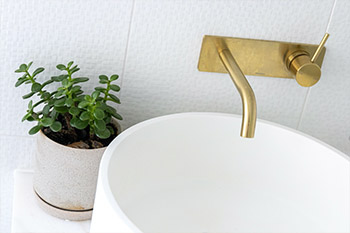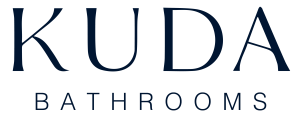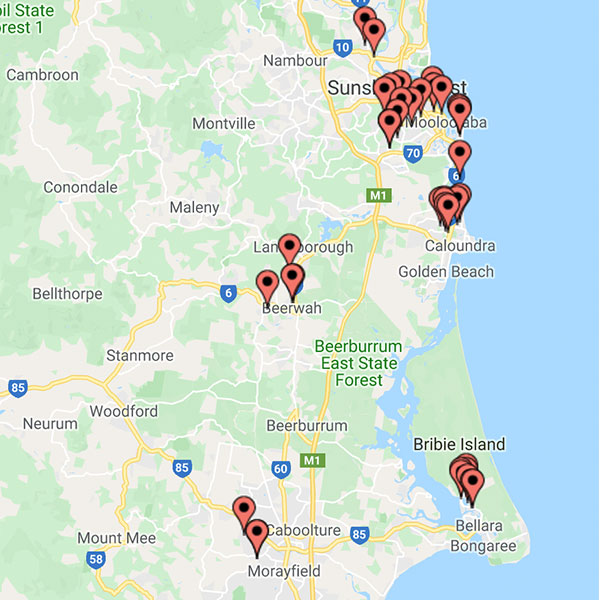How to Clean and Maintain your Bathroom
Keeping your bathroom hygienic through winterTips on how to clean and maintain your bathroom
The last thing you need during a flu and cold season is a filthy, hard to clean bathroom. There are thousands of harmful microorganisms such as Shigella, Salmonella, Hepatitis A, E. coli, norovirus and coronavirus that can be lurking in dirty bathrooms leading to nasty outbreaks among those closest to you.
Keeping ourselves and our family and friends safe during the sickliest time of the year demands both diligent personal hygiene and a clean and hygienic bathroom to wash in.
Here’s where we gross you out with some fun facts about where bacteria is hiding in your bathroom;
- Toilet bowl: 3.2 million bacteria per square inch
- Toothbrush: 200,000 bacteria per square inch
- Shower: 120,000 bacteria per square inch
- Taps & Basin: 6,267 bacteria per square inch
- Toilet seat: 295 bacteria per square inch
- Bathroom floor, in front of toilet: 764 bacteria per square inch
- Light switch: 217 bacteria per square inch
So, how much exposure are we talking?
- Most showers are used twice a day, or more than 700 times a year.
- If we allow 10 minutes per shower, the average shower is in use for more than 116 hours a year, twice that in a home of 4 people.
- This means that in an average home, over a 10-year period a shower recess gets 2300 hours or more than 3 months of continuous use.
- Uses the toilet 2,500 times per year
- Sits on the toilet 25 minutes per day
- Spends 13 months of their lives on the toilet seat
Here’s the kicker. Even the cleanest looking bathrooms are hiding millions of germs, bacteria, pathogens, mould & mildew. Just because you can’t see it doesn’t mean it’s not there.
Yuk! So how do I keep this germ farm clean?
The best way to think about cleaning your bathroom in terms of routines. You have your daily routine which includes the simple stuff like, squeegeeing the bath, shower and floor after each use, refreshing your towels and wiping the toilet down; and your weekly & monthly routines, which involve busting out the cleaning products and bit of elbow grease.
Add to this a yearly check-up and inspection from a shower repair professional to check for things like leaks, cracked tiles or compromised grout and you have yourself a solid bathroom hygiene plan that will give you a clean, hygienic and functioning bathroom FOREVER!
We put together this checklist to help send you in the right direction. Add or subtract steps depending on your own clean freakery!
Daily Routine:
- Reduce the amount of moisture left in your bathroom after you’ve finished using it by using a towel or squeegee. After every shower
use, run your squeegee over the walls of the shower to remove the bulk of the remaining water and moisture, then use a towel to mop up any remaining moisture. This simple step after every shower will most times eliminate the occurrence of mould and slime build up in your shower. It will also mean you won’t need to tackle the shower with harsh chemicals as regularly which is good for your tiles and your health.
- Ensure the bathroom is well ventilated. Poor ventilation is one of the top causes of mould. Bathrooms are notoriously damp and poorly ventilated. If you have an extraction fan, make sure you leave this on for 20-30 minutes after your bath or shower. Open windows and pull back your blinds or curtains.
- Put the toilet seat down. Fecal matter, bacteria, and other invisible nasties can spray up to six feet away when you flush. YUK! So next time your partner refuses to leave the seat down, you can tell them just how disgusting they are being.
- Wipe your basin and benchtops, including the silicone joins where your vanity meets the wall. Silicone doesn’t like harsh chemicals, so regular cleaning with a wet cloth is best.
- Check mirrors for spots and streaks.
- Check toilet sides and base for urine drips — disinfect if needed.
- Check floor – sweep and spot clean if needed.
Weekly Routine
- Sweep and mop floor. Give some attention to the toilet area.
- Remove all items from your vanity benchtop. Clean and dry the entire perimeter. If there is white or grey haze around the faucet that will not come off with normal cleaning, you have calcium build up and will need to use a product such as CLR to remove it. If you have mould or grime build up in your silicone,
- Clean the soap dish. Staying on top of this will save you in the long run.
- Clean, disinfect, and rinse the toothbrush holder or cup.
- Clean the mirrors and dust the frame.
- If your bath or shower has a door, be sure to clean that as well and polish the metal frame.
- If your tub or shower has a curtain, dust the rod and rings. Check the inside of the curtain for shampoo drips or mould and mildew – spot clean if necessary.
- Replace the towels and bathmat with clean.
- Wipe light switches, door knobs and the areas around them.
- Check the walls and spot-clean as necessary. If you have tile or partial tile walls outside the bathing areas, you may need polish them with glass cleaner to keep their mirror shine.
- Check drains and remove any hair that would otherwise cause clogs in the future.
- Pour some bleach or other disinfectant into the toilet bowl. Put the toilet brush inside the bowl. This will help to sanitize the brush for cleaning. Let the cleaner sit for 10 to 15 minutes to work its magic. Give it a good scrub using your fresh toilet brush and make sure you take the time to get underneath the toilet seat and the entire perimeter of the toilet.
Monthly Routine:
- Wash the shower curtain.
- Check the shower head for calcium clogging the nozzles. Soak the shower head in 1 cup water and 1 cup vinegar to dissolve any hard water.
- Check the ceiling over the bath and shower for water spots and mold or mildew. Clean if needed.
- Check and spot-wash the door if needed.
- Check grout lines and scrub any grungy spots with a toothbrush or angled grout brush. You can use bleach to attempt to remove stains, but not more than once a month or you could damage your tiles and grout.
When you need that really deep, once in a year clean, call The Shower Dr. We’ll clean and sanitise your shower recess and bathroom with mold inhibiting products and check for any leaks or other potential issues. We’ll give you a report on the state of your shower and make any recommendations to make your shower safe and healthy for you and your family. And because all our staff direct employees of The Shower Dr and all have been thoroughly briefed on safety measures and are absolutely committed to upholding them. We are updating our staff daily on new information relating to Coronavirus and will continue to apply every new measure advised by the Australian Government.
Call The Shower Dr on 07 5491 4458 and let us help you keep your family safe.
What our customers say
Get a Free Quote
Contact Us
Links
Servicing
All Sunshine Coast Suburbs
North Brisbane
Moreton Bay Region
Caboolture
North Lakes
Nambour
Caloundra
Noosa
Redcliffe
Click on the map to see where we've recently repaired showers for our customers


 use, run your squeegee over the walls of the shower to remove the bulk of the remaining water and moisture, then use a towel to mop up any remaining moisture. This simple step after every shower will most times eliminate the occurrence of mould and slime build up in your shower. It will also mean you won’t need to tackle the shower with harsh chemicals as regularly which is good for your tiles and your health.
use, run your squeegee over the walls of the shower to remove the bulk of the remaining water and moisture, then use a towel to mop up any remaining moisture. This simple step after every shower will most times eliminate the occurrence of mould and slime build up in your shower. It will also mean you won’t need to tackle the shower with harsh chemicals as regularly which is good for your tiles and your health.



